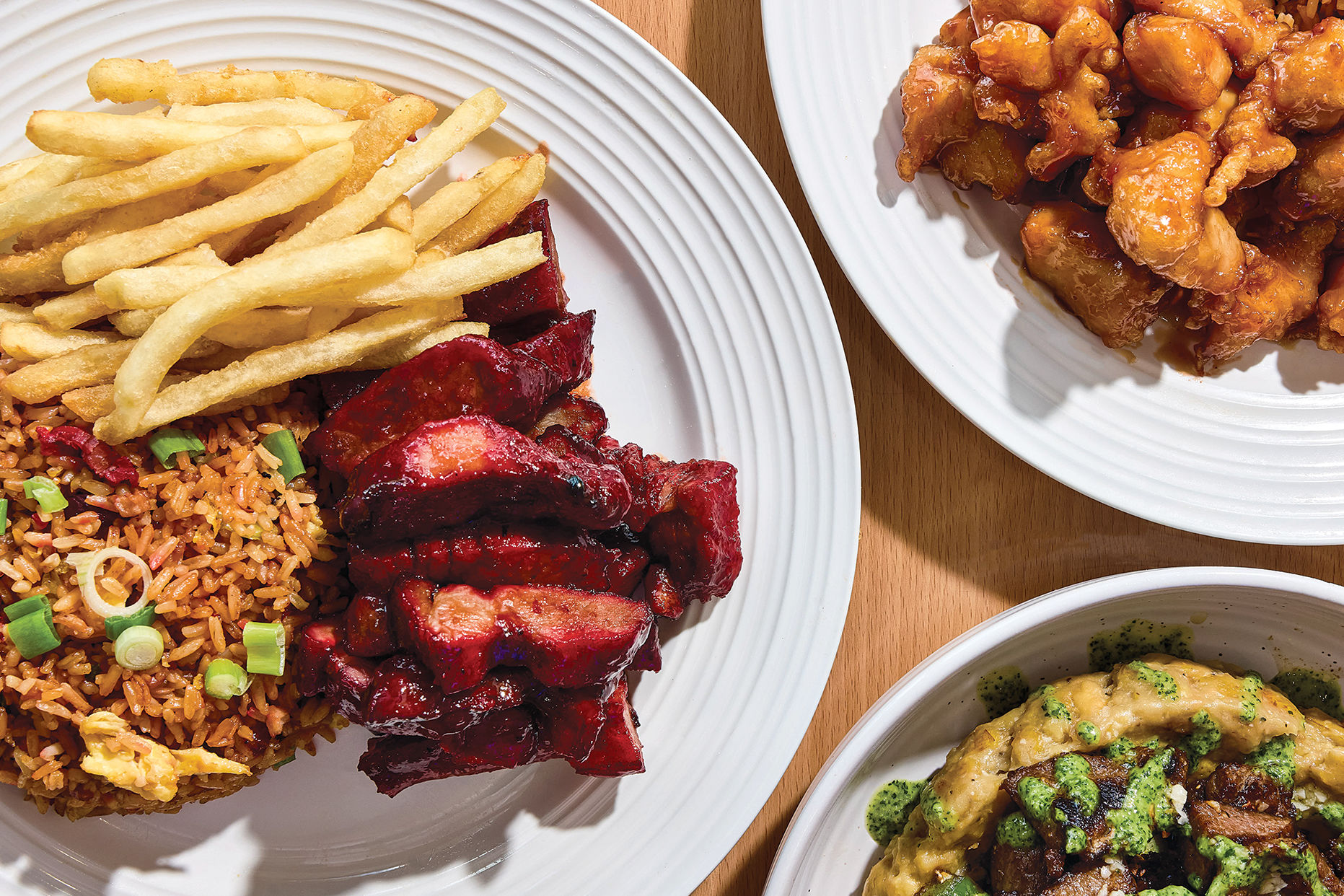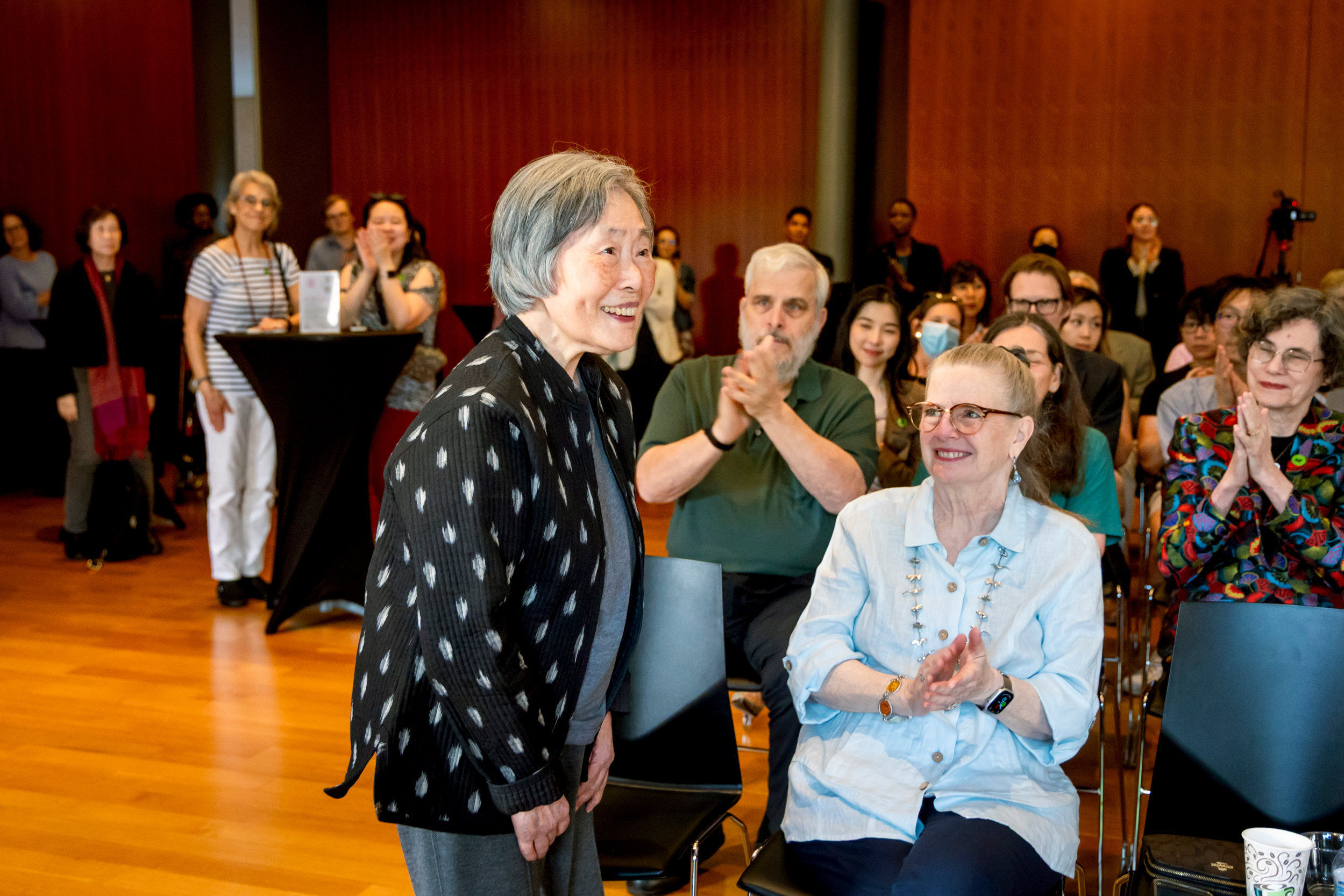Our Latest Obsession: Afandim Restaurant
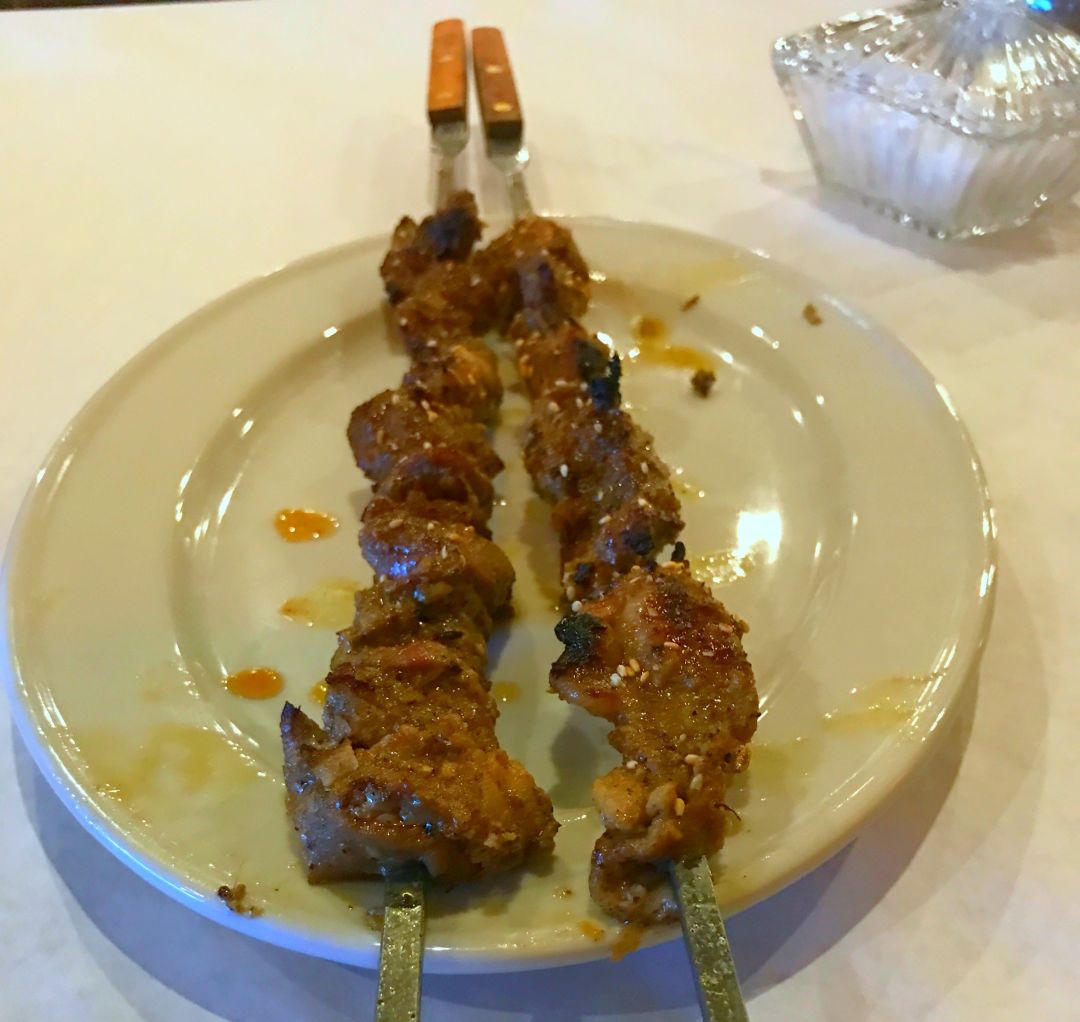
Uyghur kawap, $5.99.
Image: Alice Levitt
When I moved to Houston a year and two months ago, the closest thing the city had to Uyghur cuisine was Xinjiang BBQ, a wide-ranging Chinese restaurant that serves skewers loosely in the style of the northwestern region of China that gives the restaurant its name. By January, I was eating at Uyghur Bistro, which plied its trade with a concise menu of dishes from the Turkic people of Xinjiang. Its bill of fare has grown over time — and with it, the mission of all Uyghur cuisine has diluted with dishes from Chengdu and Szechuan. But you won't find anything but Uyghur fare at Afandim Restaurant, which opened at the end of December.
Even things that aren't Uyghur are Uyghur at Afandim. The soundtrack during my visit included Andrew Lloyd Weber's "Memory" and the theme from "Love Story," and was played on native instruments. The largely Han Chinese patrons were happy to dine among the mostly Uyghur staff, amid wall-hangings and art from Xinjiang, despite the tensions between the groups in their homeland.
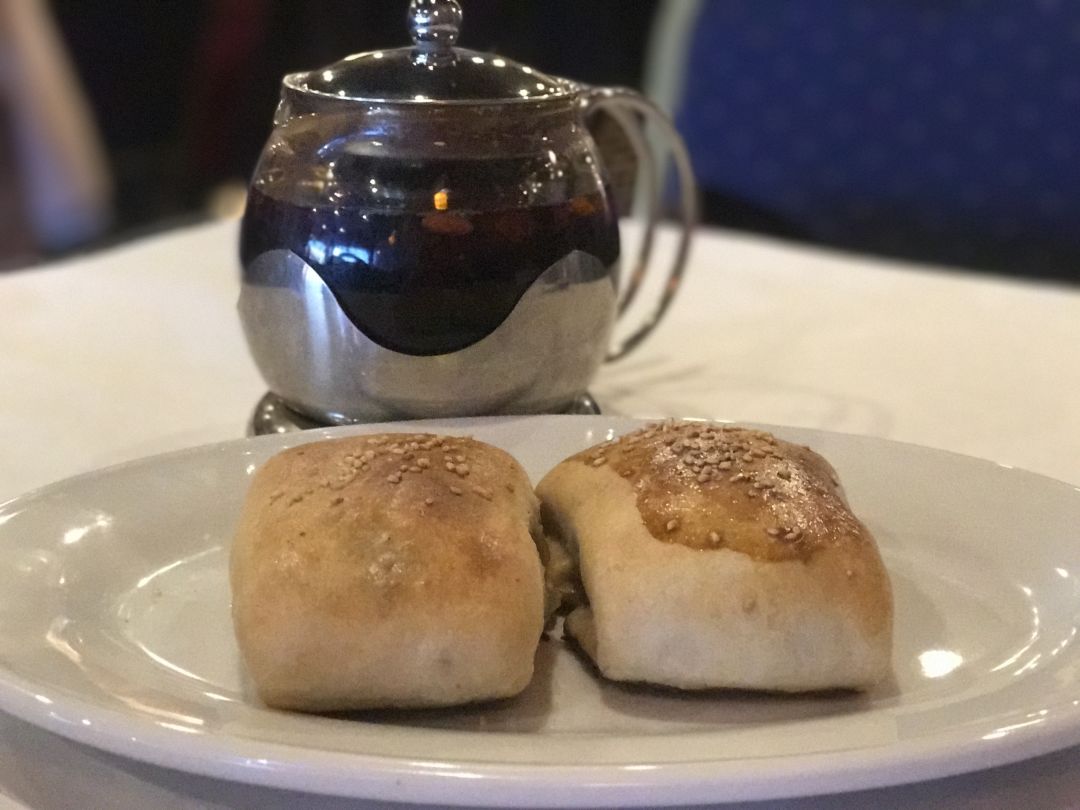
Two samsas, $4.99.
Image: Alice Levitt
But distant unrest fades away when entering Afandim past a lady grilling ultra-tender lamb skewers to lightly charred perfection on the sidewalk out front. The meat melts into an adipose nothingness that fools you into thinking you've barely taken a bite, when in fact, you've plowed through an entire sword-like skewer.
The samsas (recognize the etymological similarity to "samosa?") play a similar trick. My pocket of coarsely chopped lamb, garlic and onions had disappeared before I could stop myself from burning my mouth with the blistering dough that seemingly made it from oven to table in seconds.
The menu has already been abbreviated a bit since opening—I was excited to try the quail kebab, but it had already been crossed out. Other dishes are only available in extra-large portions, so kordak, a braised lamb stew, would have to wait until I assembled a larger party.
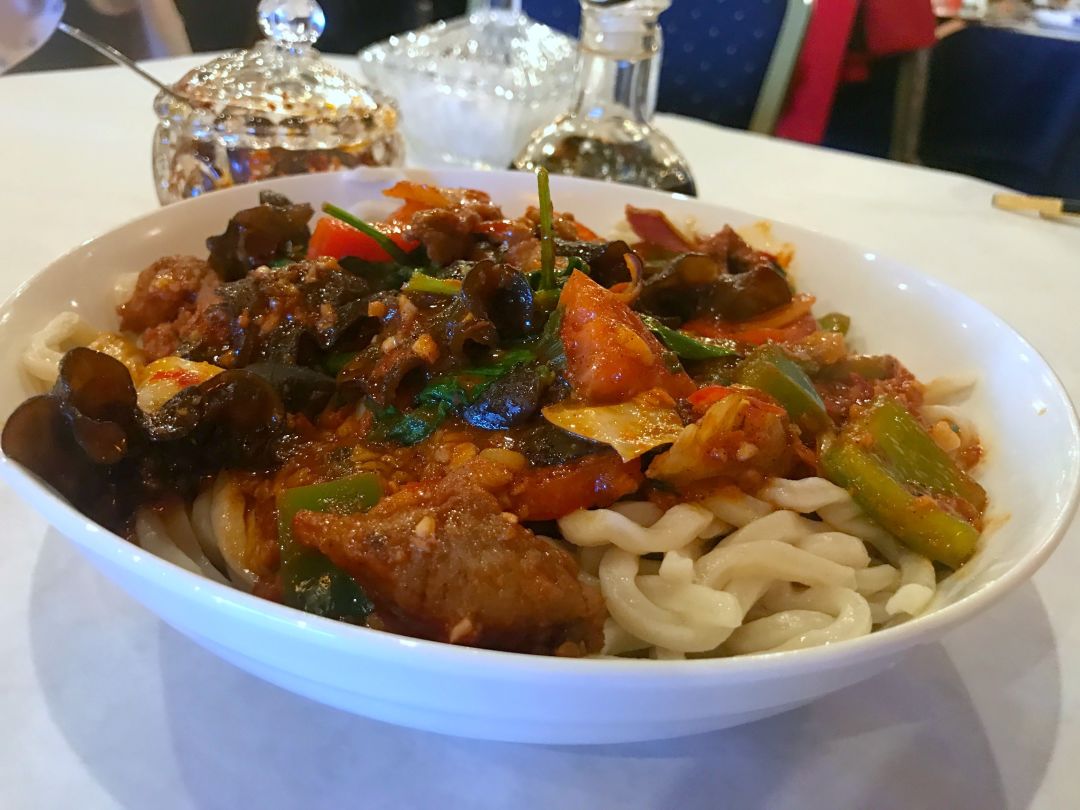
Lagman, $10.99.
Image: Alice Levitt
Having had dapanji (Big Plate Chicken) at Uyghur Bistro recently, I went with another noodle standard instead. I was most familiar with "lagman" being used to describe a noodle soup, but the word is merely an adulteration of the Mandarin lamian, or hand-pulled noodles. The lagman at Afandim is a stir fry of ropy pasta that reminded me of Japanese udon, tarted up with a kitchen sink's worth of veggies. A few pieces of thinly sliced "meat" (I think it was beef, though it was thin enough that it was hard to tell) were tossed in for good measure, few enough that I thought I might be paying penance for overindulging in the kawap.
Dishes like dapanji, which is sometimes made with Szechuan peppercorns, reveal influences that have crept into Xinjiang from other parts of China, but the cuisine as a whole is not a spicy one. Friends who have spent time there say that the food is often downright bland. But rather than seasoning dishes in a way that wouldn't be authentic, Afandim provides diners with a pair of glass jars—one filled with chile paste, another with black vinegar.
This is a master stroke for pleasing both Xinjiang natives and foreigners, but it's also an enemy to portion control. I wanted to try my lamian as-served, then in small piles with varying degrees of chile and vinegar. By the time my plate of cucumber salad, spicy with chiles and a glut of garlic that looked like a blizzard arrived, I was almost too full to eat it. But I was still left with more than enough noodles to take home and pair with the salad. Because the one thing better than multiple Uyghur restaurants in Houston is multiple sources of Uyghur leftovers.

